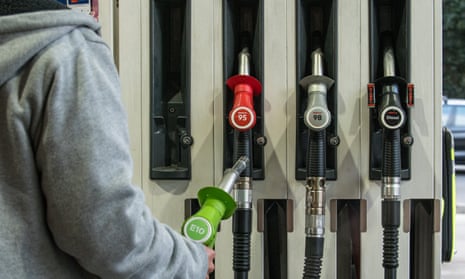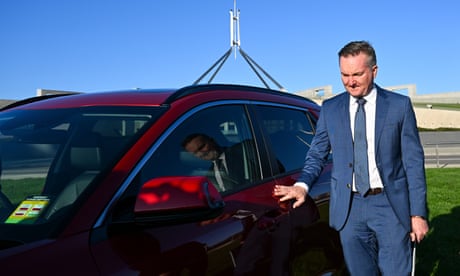Extract from The Guardian

A new car bought in Australia can use up to double the petrol used by cars in overseas markets to drive the same distance.
Australians spending much more at bowser than most overseas drivers but government’s proposed fuel efficiency standards could change that.
Fresh figures from the Climate Council, released on Wednesday, show Australians are spending more at the bowser to drive the same distance as their American and European counterparts, in countries where fuel efficiency standards have been in place for years.
A new car sold in Australia uses, on average, 6.9 litres of fuel per 100km compared with new cars in Europe and the US that use 3.5 litres and 4.2 litres, respectively.
The difference means Australians are spending, on average, almost $1,500 a year on fuel compared with $886 in the US and $738 in Europe.
When it comes to utes and SUVs, Australians are also hit with less fuel efficient vehicles. On average, Australia’s light commercial vehicles use 9.9 litres per 100km, costing about $2,878 a year, while in the US, the average figure drops to 6.1 litres per 100km or $1,773 a year.
Light commercial vehicles in Europe and China are the most fuel efficient, both averaging 5.6 litres per 100km or $1,628.
Meanwhile, the opposition leader, Peter Dutton, has continued the Coalition’s scare campaign against the new standards, labelling the move a “car and ute tax”.
The Albanese government released its proposal for a national vehicle efficiency standard in early February, with plans to introduce legislation before July that will take effect from January 2025.
The standards would place a yearly cap on the emissions output for new cars sold in Australia to encourage carmakers to supply low and zero-emissions vehicles and penalise companies that do not.
Australia, along with Russia, remains one of the few countries in the OECD without a standard.
The policy aims to reduce emissions produced by the transport sector, which account for about 10% of Australia’s total emissions, by 60% by 2030.
Nicki Hutley, an economist at the Climate Council, said the policy, if passed, would save Australians more money on fuel and provide greater choice in car yards.
“When you use less petrol you pay less for petrol. It’s pretty simple,” she said.
The evidence suggests ... there will be no price impact across the market.
“In managing their emissions of the fleet, [car manufacturers] will actually need to provide greater choice to the market rather than less and that’s really good for consumers.”
The introduction of a fuel efficiency standard has been a key point of attack for the opposition in the Dunkley byelection.
Dutton and Liberal candidate for Dunkley, Nathan Conroy, have warned voters about the changes, saying it will place a “big burden on the local tradies”.
“Albo’s ute tax is going to drive up the cost of buying a ute, but it’s also going to drive down the choice that consumers have, because some of the dealers, some of the manufacturers, are likely to withdraw some of those heavy emission vehicles from the market,” Dutton said earlier this month.
Hutley described the claims as “fear-mongering”, pointing to a 2023 study in the US that found vehicle prices didn’t increase substantially between 2003 and 2021.
“There is no evidence to suggest that that is the case. In fact, the evidence suggests the opposite will happen – that there will be no price impact across the market,” she said.
The statistical analysis by Consumer Reports found no increase in costs over the two-decade period after adjusting for inflation, while the average fuel economy improved by 30%.
The study found consumers paid about US$6,200 (A$9 500) less on fuel for utes and almost $11,600 less on fuel for SUVs than they would have if fuel economy had remained at 2003 levels.

No comments:
Post a Comment